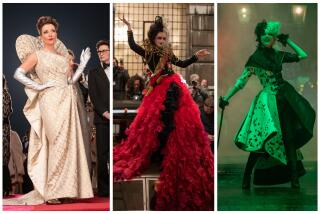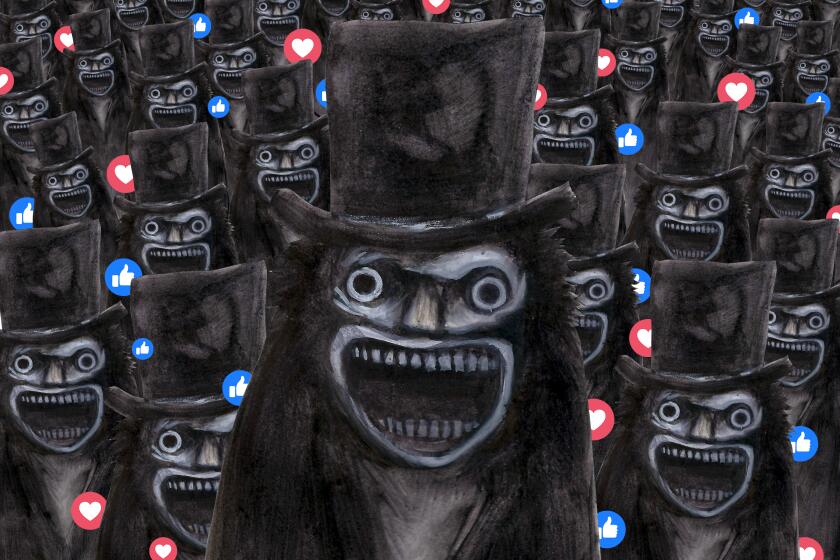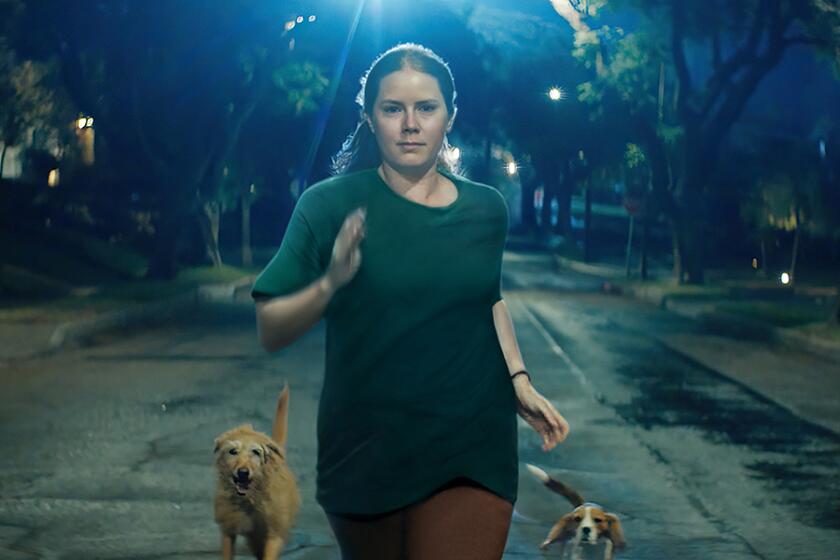Akira Kurosawa at 100
The wonder of Akira Kurosawa’s 50-year career is that it was at once remarkably varied and satisfyingly coherent. Kurosawa (1910-98) elevated the samurai genre and reinvented action filmmaking. He adapted Shakespeare, Russian classics and American pulp novels. And he offered street-level portraits of tumultuous postwar Japan that ranged in mood from uplift to despair.
But the constant in his films was the principle of heroism, not as a vaporous ideal but a way of life, an awareness of individual agency and personal responsibility in a world that does not always reward or even allow heroic behavior.
To mark the centenary of Kurosawa’s birth, the Criterion Collection is this week issuing a lavish boxed set, “AK 100: 25 Films by Akira Kurosawa,” which includes four mid-’40s films never before released on DVD. With about half a dozen flat-out masterpieces and more than a dozen good-to-great movies among the selections (even the handful of disposable films are intriguing), this is one high-quality brick of a collection -- the only regrettable omission, because of rights issues, is his version of “King Lear,” 1985’s “Ran.”
The set, which includes a hardcover book with notes by the film scholar Stephen Prince, lists for $399 but is available for less at most retailers. Though several of the films here have been released in supplement-rich Criterion special editions, the versions in “AK 100” do not include any extras.
Kurosawa will be remembered as the filmmaker who put Japan on the global cinematic map. The older Japanese masters Yasujiro Ozu, Kenji Mizoguchi and Mikio Naruse had been active since the pre-war years, but Kurosawa’s “Rashomon” (1950), which took the Oscar for best foreign film, was a shock to Western audiences who were not expecting such an up-to-the-minute expression of modernist ambiguity from the still-exotic East, let alone from an industry that had barely recovered from a devastating war.
A prismatic whodunit that refracts a violent crime through four contradictory tellings, “Rashomon” remains one of the most influential movies of all time. Its narrative structure, a network of unreliably narrated flashbacks, is now a staple of film language, and its title has entered the vernacular. Even those who have never seen the movie understand that the “Rashomon effect” refers to such fuzzy epistemological problems as the subjectivity of perception and the relativity of truth.
Besides synthesizing such Japanese forms as Noh theater and sumi-e brush painting, the young Kurosawa drew on the muscular dynamism of John Ford, the expansive humanism of Jean Renoir and the baroque technique of Orson Welles, not to mention the ascendant schools of neorealism and film noir.
But the influences also ran the other way and arguably to a greater degree. “Rashomon” and “Seven Samurai” (1954) invented storytelling paradigms for filmmakers the world over. Kurosawa is also honorary godfather to genres as disparate as the sci-fi adventure and the spaghetti western.
George Lucas turned the bickering peasants of Kurosawa’s action epic “The Hidden Fortress” (1958) into C-3PO and R2-D2. Sergio Leone’s “A Fistful of Dollars” (1964) is an unauthorized revamp of “Yojimbo” (1961), Kurosawa’s sprightly tale of a wandering samurai.
Kurosawa’s cosmopolitan worldview was in keeping with someone of his standing and generation. He was born into a family with samurai ancestry at the end of the Meiji era, during which Japan emerged from centuries of isolation, and his teen years coincided with the Taisho period’s brief flowering of Western ideas and culture.
His bohemian older brother Heigo was a profound influence, turning the young Akira on to the likes of Abel Gance and Dostoevsky. (It’s hard not to see the loss of Heigo, who killed himself when Akira was 23, as another formative event, the shadow that looms over all that is tragic in Kurosawa’s work.)
Along with Ingmar Bergman, Vittorio de Sica and Satyajit Ray, Kurosawa belonged to the midcentury vanguard of international auteurs who persuaded the intellectual elite that movies could be serious art. But it’s important to remember that Kurosawa was always a popular artist. Unlike Ozu, who found significance in the in-between moments of daily life, Kurosawa gravitated to large canvases and grand themes. He engineered his material for utmost emotional effect; his films, in terms of both physical action and thematic meaning, are models of lucidity.
It is perhaps inevitable that Kurosawa’s samurai movies overshadow all his others, since they are the ones that most palpably affected how films are made. His mastery of form was never more evident than in his effective action sequences. He used multiple cameras long before the practice was common, experimented with focal lengths and film speeds and edited to emphasize motion and impact.
The technical proficiency is evident in his first film, “Sanshiro Sugata” (1943), a martial-arts hit that spawned a 1945 sequel, “Sanshiro Sugata II.” Many Kurosawa hallmarks are present in his strikingly assured debut: the master-pupil relationship, the page-turning transitional “wipes,” the flair for montage. The climactic fight, which takes place in a wind-swept field, inaugurates Kurosawa’s cinema of the elements, prefiguring the gales, mists, heat waves and downpours to come.
Myriad threads and themes stand out as you make your way through the box. There’s the partnership between the director and his great star, the magnetic Toshiro Mifune, who appeared in almost all his films between 1948’s “Drunken Angel” and 1965’s “Red Beard,” often with Takashi Shimura.
There’s the sympathetic view of the downtrodden, in the slum portrayals that run from “Drunken Angel” to the Gorky adaptation “The Lower Depths” (1957) to “Dodes’ka-den” (1970), Kurosawa’s first color film -- and first flop. (Depressed over its failure and a painful illness, he attempted suicide in 1971.)
And there’s the complicated story of postwar Japan itself. While his most famous movies are set in the remote past, Kurosawa was very much an artist of his moment. This was, to begin with, a political necessity: witness the shift from nationalist boosterism in “The Most Beautiful” (1944), a propaganda commission set among female factory workers, to pacifist fervor in “No Regrets for Our Youth” (1946), his first film under the Allied occupation.
“Drunken Angel” and “Stray Dog” (1949) are urban noirs with a documentary flavor, revealing the poverty and crime of bombed-out Tokyo. The wrenching “Ikiru” (1952), the story of a career pencil pusher who reevaluates his life after a cancer diagnosis, indicts a culture of buck-passing bureaucracy. “The Bad Sleep Well” (1960) takes on corporate malfeasance in go-go Japan.
Kurosawa’s declining productivity after the mid-’60s could be partly chalked up to the changing economics of a shrinking industry. But it was no coincidence that by the time his career entered its long autumnal phase, the social ills he had depicted seemed more entrenched than ever, lodged deep beneath the materialism of Japan’s economic miracle. Kurosawa, perhaps understandably, shifted his attention to mythic realms in such stately late works as “Dersu Uzala” (1975), “Kagemusha” (1980) and “Ran.”
Received wisdom has it that Kurosawa achieved enduring international success because he was the “most Western” of Japanese directors. This explanation often sounded more like a charge, and it was usually advanced by those who saw someone like Ozu as a more authentic cultural export. But much more than a canny imitator, Kurosawa was a central conduit in the emerging global feedback-loop of 20th century movies, a vivid early embodiment of the now-common ethos that anything, from anywhere, is for the taking.
More to Read
Only good movies
Get the Indie Focus newsletter, Mark Olsen's weekly guide to the world of cinema.
You may occasionally receive promotional content from the Los Angeles Times.







